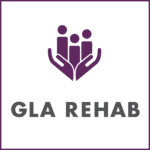Road to Recovery: A Driving Assessment and Rehabilitation Program, a New Division of GLA

For many individuals, driving after an illness or injury is a crucial component of community involvement as community mobility is essential to an individual’s independence.
There is an increasing need to ensure safe driving in the community through a formal evaluation and rehabilitation process.
In June 2013, Galit Liffshiz & Associates, with our partner in this project, DriveWise, received approval from the Ontario Ministry of Transportation as a Functional Assessment Centre for medical assessments and vision waiver assessments.
We developed a new division and service that we now offer together with our partner, DriveWise. The name of this program is Road to Recovery.
Our assessment involves two main components, an In-Clinic assessment with a trained Occupational Therapist and an On-Road examination with a trained driving instructor.
The in-clinic Occupational Therapist portion includes gathering medical history followed by a physical assessment (range of motion, strength, sensation, and general mobility testing), cognitive-behavioural and perceptual assessment (concentration, decision making, impulse control, reaction time, judgement, and visual perception), and vision assessment (visual screening of depth perception, visual acuity, and peripheral vision).
Individuals that benefit from driving evaluations include:
- Drivers whose license may be suspended or under review by the Ontario Ministry of Transportation.
- People who have experienced an injury or illness that may be affecting their ability to drive, including a brain injury or stroke.
- People with driving anxiety or phobias related to driving following a motor vehicle accident.
- Individuals with physical disabilities who require vehicle modifications to enable them to drive.
The second component of the program involves driver rehabilitation. An Occupational Therapist can provide rehabilitation targeted specifically at the areas of deficit that impede a client’s ability to drive. The deficit may be physical, cognitive, emotional or a combination of all three.
Our Occupational Therapist is educated in Driver Rehabilitation and uses in-clinic and on-road cognitive retraining. He may use the DriveWise state-of-the-art driving simulator for driver rehabilitation as well.
If you would like to learn more about this service, please contact the office of Galit Liffshiz & Associates at 416-449-6466.
Written By: Rob Kulig, BHSc, MSc OT, OT Reg. (Ont.)

